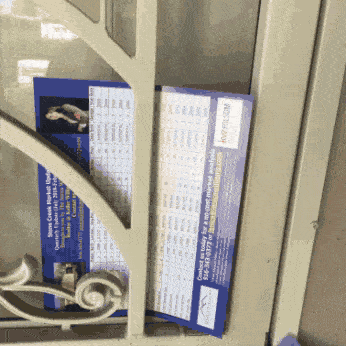[ad_1]

Are 3-D mammograms higher than usual 2D imaging for catching complex cancers?
A medical trial is recruiting 1000’s of volunteers — together with numerous Black girls who face disparities in breast most cancers loss of life charges — to check out to determine.
Other people like Carole Stovall, a psychologist in Washington, D.C., have signed up for the find out about to lend a hand solution the query.
“All of us want a mammogram anyway, so why no longer do it with a find out about that permits the scientists to grasp extra and transfer nearer to discovering higher therapies and techniques of perhaps even combating it?” Stovall mentioned.
The underrepresentation of ladies and minorities in analysis is a long-simmering factor affecting well being issues together with Alzheimer’s illness, stroke and COVID-19. Trials with out range result in gaps in working out of the way new therapies paintings for all other people.
“Till we get extra Black girls into medical trials, we will’t exchange the science. And we’d like higher science for Black our bodies,” mentioned Ricki Fairley, a breast most cancers survivor and suggest who is operating at the factor.
Black girls are 40% much more likely to die from breast most cancers than white girls and have a tendency to be recognized more youthful. Nevertheless it’s no longer transparent whether or not 3-D mammography is healthier for them, mentioned Dr. Worta McCaskill-Stevens of the Nationwide Most cancers Institute.
“Are there populations for whom this could be necessary to have early analysis?” requested McCaskill-Stevens. “Or is it destructive,” inflicting too many false alarms or unneeded follow-up checks and coverings?
McCaskill-Stevens, who’s Black, leads NCI’s efforts to spice up get right of entry to to most cancers analysis in minority and rural communities. She has joined the find out about herself.
The more moderen 3-D method has been round for a decade, however there’s by no means been conclusive proof that it’s higher than 2D at detecting complex cancers. The screening method combines a couple of footage of the breast taken from other angles to create a 3-D-like symbol. Each 3-D and 2D mammograms compress the breast and use low doses of radiation.
Prior research recommend that 3-D reveals extra cancers than 2D, however catching extra cancers doesn’t essentially imply extra lives stored. Some cancers ignored by way of usual screening would possibly not development or want remedy. Earlier research didn’t randomly assign sufferers to a screening means, the gold usual for analysis.
The perception “that if it’s new, it’s glossy, then it’s higher,” isn’t essentially true, McCaskill-Stevens mentioned. “Till we’ve got the proof to toughen that, then we’d like well-designed randomized trials.”
The trial has enrolled just about 93,000 girls thus far with a objective of 128,000. The NCI-funded find out about is now operating in Canada, South Korea, Peru, Argentina, Italy and 32 U.S. states. A web site in Thailand will quickly start enrolling sufferers.
“We added extra global websites to make stronger the trial’s range, in particular for Hispanic and Asian girls,” mentioned Dr. Etta Pisano, who leads the find out about.
General, 42% of contributors are Hispanic. As recruiting continues, enrolling Black girls and different girls of colour will “completely” proceed as a concern, Pisano mentioned.
Members are randomly assigned to both 2D or 3-D mammograms and are adopted for a number of years. The choice of complex cancers detected by way of the 2 strategies shall be in comparison.
On the U.S. find out about websites, 21% of analysis contributors are Black girls — that’s upper than an ordinary most cancers remedy find out about, during which 9% of contributors are Black, McCaskill-Stevens mentioned.
The College of North Carolina has signed up extra Black girls than every other find out about web site. Just about 1 / 4 of the just about 3,000 girls enrolled at UNC’s two places are Black.
“Ladies in North Carolina need to participate in one thing that’s larger than them,” mentioned Dr. Cherie Kuzmiak, who leads the UNC arm of the find out about. “They would like this lively position in serving to decide the way forward for well being handle girls.”
In Washington, D.C., phrase of mouth has resulted in a success recruiting.
An opportunity stumble upon at her hair salon persuaded Stovall to sign up for the analysis. Whilst looking forward to a hair appointment, she met Georgetown College most cancers researcher Lucile Adams-Campbell. The 2, each Black, began chatting.
“She defined how necessary it used to be to get girls of colour into this system,” mentioned Stovall, who jumped on the likelihood to atone for her mammograms after the COVID-19 pandemic not on time screening for her and 1000’s of others.
For Stovall, there used to be a non-public reason why to sign up for the analysis. Her sister just lately finished remedy for triple adverse breast most cancers, an competitive kind that is affecting Black girls at upper charges than white girls.
Ladies ages 45 to 74 with no non-public historical past of breast most cancers are eligible for the find out about, which introduced in 2017. Many ladies are also offering blood and cheek swab samples for a database that shall be mined for insights.
“It’s a dream that individuals had because the starting of screening that we wouldn’t have compatibility everyone into the similar field,” Pisano mentioned. The find out about’s findings may just “scale back disparities if we’re a success, assuming other people have get right of entry to to care.”
Stovall, 72, had a short lived scare when her mammogram, the normal 2D kind, confirmed one thing suspicious. A biopsy dominated out most cancers.
“I used to be extraordinarily relieved,” Stovall mentioned. “Everyone I do know has heard from me concerning the want for them to move get a mammogram.”
___
The Related Press Well being and Science Division receives toughen from the Howard Hughes Clinical Institute’s Science and Instructional Media Team. The AP is just accountable for all content material.
Similar
[ad_2]








